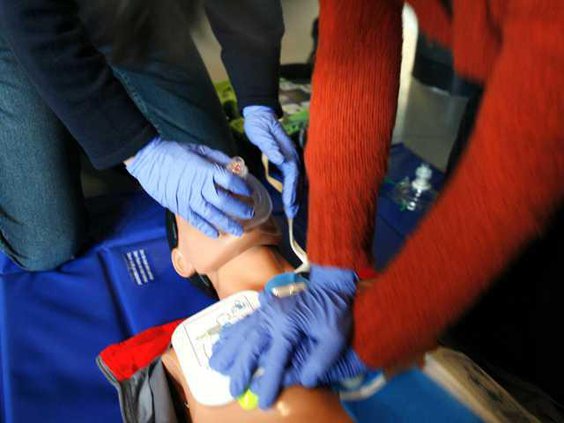Manteca District Ambulance wants to give Manteca-Lathrop residents the power to save lives.
The non-profit ambulance service is hoping to educate as many people as possible in a simple, hands only cardio pulmonary resuscitation technique in a bid to increase the survival rate of people who stop breathing due to various reasons including heart attacks.
The main thrust of its education efforts are in Manteca and Lathrop high schools. So far, some 200 teens have been schooled in the hands only CPR technique at Sierra and Lathrop highs schools. Also a number of Interact students — Rotary’s teen service club affiliate — have also learned the technique.
Manteca District Ambulance Chief Executive Officer Bill Caldera told the Manteca Rotary during a Thursday meeting at Isadore’s the goal is to replicate the success in communities such as Seattle that have seen survival rates for those who have stopped breathing jump by nearly 4 percent due to the ability of more people to use the hands only CPR technique.
Caldera said the hands only technique blessed by the Red Cross in 2010 is designed to overcome hesitations people have about using mouth-to-mouth techniques with complete strangers full CPR require. It also equips more people with skills needed to keep a patient alive until help arrives.
“Who wants to blow into the mouth of a stranger?” Caldera noted.
He pointed out for many it is a big concern in an age with communicable diseases such as AIDS.
The hands only technique can be taught, practiced, and mastered in less than 55 minutes of class time.
It isn’t likely to restart a heart as full-scale CPR can often do. The goal is to restore the partial flow of oxygenated blood the heart and brain. That delays tissue death and extends the window of opportunity for successfully restarting the heart without permanent brain damage.
It involves compressions of roughly twin chest deep on the chest at a rate of 100 times a minute to pump blood through the body.
A regular CPR class can take up to five hours for certification.
“The goal is to increase the survival rate of people who have stopped breathing,” Caldera said.
Using hands to keep people alive
Manteca District Ambulance pushing hands-only CPR imitative



